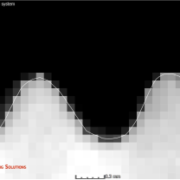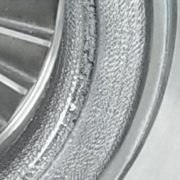Modern Additive Manufacturing (AM) methods often employ subtractive machining to achieve precise dimensional and surface finish characteristics. This is due to current AM limitations in build precision and surface quality. These hybrid AM / subtractive components also demand a hybrid approach to measurement. Internal features on AM parts are difficult or impossible to non-destructively measure using solely traditional metrology methods and so industrial computed tomography (CT) must also be employed. CT scanning not only allows for precise measurements using metrology CT, but allows for detection of internal defects that are not otherwise able to be seen. However, well machined portions are best served through other measurement methods due to precision requirements and data characteristics. This can necessitate a hybrid measurement approach. However, traditional CT scanning and service providers are not trained as metrologists and do not follow particular standards related to metrology – especially ISO17025. Also complicating measurement is the design and datum reference frames used for additive parts that typically follow a traditional machined component print layout. A layout method following best practices from the casting industry is suggested here. This article explores the methods (GD&T), issues, limitations and current solutions associated with good metrology practices for AM and hybrid AM components.
Continue Reading →


